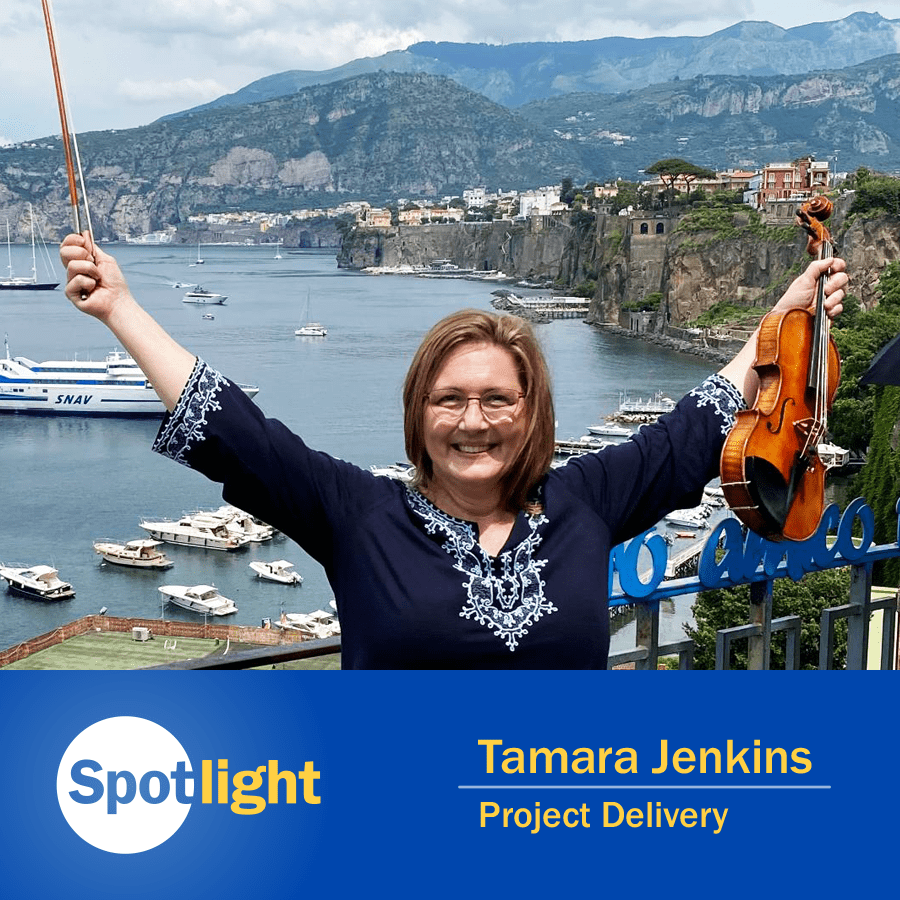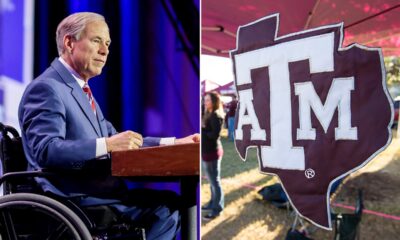Seattle, WA
Seattle City (spot)Light: Tamara Jenkins, Project Delivery Director – Powerlines

The Basics
How long have you been at City Light? 12 and a half years.
Division: Project Delivery
Tell us about your role. I oversee successful project delivery with a focus on safety, public service, and relationship building. It is my honor to lead a talented and skilled team that is responsible for delivering projects. We work across the Seattle City Light service area, collaborating with City departments, franchise city partners, governmental agencies, and customers. Our customers are at the heart of everything we do. Our Project Delivery team’s expertise includes project management and oversight, construction management, work and asset management, and a new program focused on underground cable replacement. Our work is guided by our team’s North Star: “As a team we deliver, together we serve.” My journey allows me to learn and grow every day.
Background
Hometown: Arlington, Texas
Alma mater: Saint Martin’s University, Lacey, Wash.
Discipline/Trade of study: Governmental leadership, civil engineering, project management and construction management
Tell us about your family/pets: My faith, family and friends breathe meaning into my life. They are a huge part of who I am due to their continued influence. I’ve also learned that our family includes friends who become our family. Our family continues to be inspired by many foster kiddos through our previous foster care license. My husband Clint and I are Labrador fans. Teddy is our pet partner in animal-human bonding, sharing the love of therapy animals with kiddos, military families, and fire departments, to name a few. Teddy is seven, and we are developing his retirement plan. We will keep taking Teddy on visits as long as he has a desire to go. In parallel, it’s operation “Can we get a new puppy to train?” Hoping my sales pitch goes well with Clint!
Just for fun
What has been your favorite project you’ve worked on/have been working on at City Light? Why? Wow, that’s a tough one to respond to because I am inspired by teamwork, serving, and delivering public safety projects together. I am going to go with the Alaskan Way Viaduct, Seawall Replacement, and Waterfront Redevelopment project. This public project is what brought me to City Light. Public safety and public service inspired me then and inspires me now. There are many aspects that go into delivering a program: learning, growing, collaborating, coordinating and celebrating. The redevelopment of Seattle’s waterfront is nearing completion after a few decades (go team!), and it embodies the public service, public safety and teamwork that aligns with my personal core values.
What is your motto or personal mantra? Serving a higher cause greater than ourselves brings me inner joy, peace and contentment.
What would we most likely find you doing on the weekend? Love weekends! It’s a time to renew and refresh the mind, body and soul. Most Saturday mornings are “me time” with my fitness accountability coach and charting the upcoming week. “Me time” extends to violin playing. My husband works most Saturdays, so our pet partner and I enjoy taking baked goods (e.g. cinnamon rolls, banana bread, red velvet cake and kolaches) and food to his fire and rescue station when he is on duty. Saturday is also spent running errands, getting ready for the next week and pet partner dog training. When my husband has a Saturday off, we might attend an animal-human bonding event. Sunday is a day of rest. My family and I attend faith-based services, enjoy Sunday dinner and rest.
The big game is on – what sport are you watching and who are you rooting for? Football of course!! Go Chiefs!
What is your favorite local restaurant? My favorite place to dine is at home with my husband! He makes yummy grilled food, especially smoked brisket and steaks. If we are going on one of our weekly date nights, it would be a toss-up between Green House (Gig Harbor) and Lobster Shop (Ruston Way in Tacoma).

Seattle, WA
Sara Nelson Restarts the Debate About Allowing More Housing in SoDo – The Urbanist

A bill introduced by Seattle Council President Sara Nelson this week is set to reignite a debate over allowing housing on Seattle’s industrial lands and the future of the SoDo neighborhood. The industrial zone in question is immediately west and south of T-Mobile and Lumen stadiums, abutting the Port of Seattle. That debate had been seemingly put to rest with the adoption of a citywide maritime and industrial strategy in 2023 that didn’t add housing in industrial SoDo, following years of debate over the long-term future of Seattle’s industrial areas. This bill is likely going to divide advocates into familiar old camps during a critical year of much bigger citywide housing discussions.
The idea of allowing residential uses around the south downtown stadiums, creating a “Maker’s District” with capacity for around 1,000 new homes, was considered by the City in its original analysis of the environmental impact of changes to its industrial zones in 2022. But including zoning changes needed to permit residential uses within the “stadium transition overlay district,” centered around First Avenue S and Occidental Avenue S, was poised to disrupt the coalition of groups supporting the broader package.
Strongly opposed to the idea is the Port of Seattle, concerned about direct impacts of more development close to its container terminals, but also about encroachment of residential development onto industrial lands more broadly.

While the zoning change didn’t move forward then, the constituency in favor of it — advocates for the sport stadiums themselves, South Downtown neighborhood groups, and the building trades — haven’t given up on the idea, and seem to have found in Sara Nelson their champion, as the citywide councilmember heads toward a re-election fight.
“There’s an exciting opportunity to create a mixed-use district around the public stadiums, T-Mobile Park and Lumen Field, that prioritizes the development of light industrial “Makers’ Spaces” (think breweries and artisans), one that eases the transition between neighborhoods like Pioneer Square and the Chinatown-International District and the industrial areas to the south,” read a letter sent Monday signed by groups with ties to the Seattle Mariners and the Seattle Seahawks, labor unions including SEIU and IBEW, and housing providers including Plymouth Housing and the Chief Seattle Club. And while Nelson only announced that she was introducing this bill this week, a draft of that letter had been circulating for at least a month, according to meeting materials from T-Mobile Park’s public stadium district.

Under city code, 50% of residential units built in Urban Industrial zones — which includes this stadium overlay — have to be maintained as affordable for households making a range of incomes from 60% to 90% of the city’s area median income (AMI) for a minimum of 75 years, depending on the number of bedrooms in each unit. And units are required to have additonal soundproofing and air filtration systems to deal with added noise and pollution of industrial areas.
But unlike in other Urban Industrial (UI) zones, under Nelson’s bill, housing within the stadium transition overlay won’t have to be at least 200 feet from a major truck street, which includes Alaskan Way S, First Avenue S, and Fourth Avenue S. Those streets are some of the most dangerous roadways in the city, and business and freight advocates have fought against redesigning them when the City has proposed doing so in the past.
The timing of the bill’s introduction now is notable, given the fact that the council’s Land Use Committee currently has no chair, after District 2 Councilmember Tammy Morales resigned earlier this month, and the council has just started to ramp up work on reviewing Mayor Bruce Harrell’s final growth strategy and housing plan. Nelson’s own Governance, Accountability, and Economic Development Committee is set to review the bill, giving her full control over her own bill’s trajectory, with Councilmembers Strauss and Rinck — the council’s left flank — left out of initial deliberations since they’re not on Nelson’s committee.
As Nelson brought up the bill in the last five minutes of Monday’s Council Briefing, D6 Councilmember Dan Strauss expressed surprise that this was being introduced and directed to Nelson’s own committee. Strauss, as previous chair of the Land Use Committee, shepherded a lot of the work around the maritime strategy forward, and seemed stunned that this was being proposed without a broader discussion.
“Did I hear you say that we’re going to be taking up the industrial and maritime lands discussion in your committee? There is a lot of work left to do around the stadium district, including the Coast Guard [base],” Strauss said. “I’m quite troubled to hear that we’re taking a one-off approach when there was a real comprehensive plan set up last year and to be kind of caught off guard here on the dais like this, without a desire to have additional discussion.”
On Tuesday, Strauss made a motion to instead send the bill to the Select Committee on the Comprehensive Plan, chaired by D3 Councilmember Joy Hollingsworth. After a long discussion of the merits of keeping the bill in Nelson’s committee, the motion was shot down 5-3, with Councilmembers Kettle and Rinck joining Strauss. During public comment, members of the Western States Regional Council of Carpenters specifically asked for the bill to say in Nelson’s committee, a highly unusual move.
Nelson framed her bill Tuesday as being focused on economic development, intended to create more spaces that will allow small industrial-oriented businesses in the city. Nothing prevents those spaces being built now — commercial uses are allowed in the stadium overlay — but Nelson argued that they’ll only come to fruition if builders are allowed to construct housing above that ground-floor retail.
“What is motivating me is the fact that small light industrial businesses need more space in Seattle,” Nelson said. “Two to three makers businesses are leaving Seattle every month or so, simply because commercial spaces are very expensive, and there are some use restrictions for certain businesses. And when we talk about makers businesses, I’m talking about anything from a coffee roaster to a robot manufacturer, places where things are made and sold, and those spaces are hard to find. […] The construction of those businesses is really only feasible if there is something on top, because nobody is going to go out and build a small affordable commercial space for that kind of use”
Opposition from the Port of Seattle doesn’t seem to have let up since 2023.
“Weakening local zoning protections could not come at a worse time for maritime industrial businesses,” Port of Seattle CEO Steve Metruck wrote in a letter to the Seattle Council late last week. “Surrendering maritime industrial zoned land in favor of non-compatible uses like housing invokes a zero-sum game of displacing permanent job centers without creating new ones. Infringing non-compatible uses into maritime industrial lands pushes industry to sprawl outward, making our region more congested, less sustainable, and less globally competitive.”
SoDo is a liquefaction zone constructed on fill over former tideflats and is close to state highways and Port facilities, but not particularly close to amenities like grocery stores and parks. The issue of creating more housing in such a location will likely be a contentious one within Seattle’s housing advocacy world.
Nelson’s move may serve to draw focus away from the larger Comprehensive Plan discussion, a debate about the city’s long-term trajectory on housing. Whether this discussion does ultimately distract from and hinder the push to rezone Seattle’s amenity-rich neighborhoods — places like Montlake, Madrona, and Green Lake — to accommodate more housing remains to be seen.

Ryan Packer has been writing for The Urbanist since 2015, and currently reports full-time as Contributing Editor. Their beats are transportation, land use, public space, traffic safety, and obscure community meetings. Packer has also reported for other regional outlets including Capitol Hill Seattle, BikePortland, Seattle Met, and PubliCola. They live in the Capitol Hill neighborhood of Seattle.
Seattle, WA
Critics say SPS capital levy will result in 'mega schools' and school closures

Meeting on Seattle Public Schools levies ahead of election
This February, when voters head to the polls, they’ll be deciding on replacing two Seattle Public Schools levies that are expiring this year.
SEATTLE – When voters send back their ballots in February, they’ll be deciding on replacing two Seattle Public Schools levies that are expiring in 2025.
The district relies on local voter-approved levies like those to help pay for operations and to fund building construction and repairs.
What they’re saying:
While the year’s operation’s levy hasn’t had much pushback, critics say the capital levy is causing controversy, including concerns it will lead to school closures.
Some of those affiliated with the Save our Schools group say the capital levy is also prompting concerns that it will lead to “mega schools.”
“Seattle Public Schools has 106 schools. We have facility needs we are going to place before the voters,” said Richard Best, Executive Director of Capital Projects, Planning and Facilities of Seattle Public Schools.
School officials say there could be serious consequences for students if two propositions fail to pass February 11.
“That would be, I won’t say catastrophic, but there will be declining systems that could have consequential implications in that, when we do implement that system repair, it costs more,” said Best.
The operations levy would provide schools with $747 million, replacing the last EP&O levy approved in 2022.
It wouldn’t reduce the deficit, but would continue a current funding source, for things like salaries, school security, special education and multilingual support staff.
This was a breakdown that SPS provided of the operations levy online:
Operations Levy Details 2026-2028
- Proposed Levy Amount: $747 million
- Levy Collected: 2026–2028
- Replaces: Expiring EP&O Levy approved in 2022
- Current tax rate is 63 cents per $1,000 of assessed property value.
The second proposition, the $1.8 billion Building Excellence Capital Levy, would provide money for building projects and technology.
This was a breakdown of that proposition by SPS:
Building Excellence VI Capital Levy Details
- Proposed Amount: $1.8 billion
- Capital Projects Funding: $1,385,022,403
- Technology Funding: $$414,977,597
- Estimated Levy Rates: 93 cents to 79 cents per $1,000 of assessed property value
- Levy Collected: 2026-2031
A parent who didn’t want to share his name for privacy reasons told us he was concerned about the school closure plan that was scrapped last year, and wondered if the situation was “sustainable.”
Critic Chris Jackins belies the capital levy, as written, could result in the closure of schools.
“This is a continuation of an effort to close more schools,” said Jackins.
He wrote the statement in the voter pamphlet arguing against proposition 2. He says it would allow the construction of “mega schools,” which will in turn be used to then close more schools.
“On the capital levy, they have two projects which will create two more mega-sized schools, they are both scheduled at 650 students. They both cost more each, more than $148 million,” he said. “They are continuing their construction to add even more elementary school capacity when they say they have too much. It doesn’t make sense.”
The district’s website reads that major renovations and replacement projects would include replacement of at least one elementary school in northeast Seattle.
“The two schools they are talking about, one they didn’t name, so nobody knows, and one is Lowell, which is an existing school, but they are planning to destroy most of it and make it much larger,” Jackins said.
“I have worked designing schools since 1991 and since that period, I have never designed a school smaller than 500 students,” said Best. “We use a model for 500 students, which is three classrooms per grade level.”
Best explained further.
“The term is not ‘mega schools.’ We design schools to be schools within schools. You have a first-grade cohort, maybe 75 or 100 students. They stay together. Middle schools are 1,000 students. Those are very common throughout the state of Washington.”
Best says school closures aren’t on the table right now, but may be revisited at some point.
“We are going to engage in the conversation about schools, school capacity, looking at elementary schools, our focus right now is getting these two levies passed,” he said.
Meantime, Jackins is asking people to vote down the capital levy, and then to ask that it be resubmitted in a form that uses the funds to fix up existing schools in order to keep them open.
The ballots are expected to go out to voters around January 22. The election is set for February 11.
The Source: Information from this story is from Seattle Public Schools officials and the Save our Schools group.
BEST OF FOX 13 SEATTLE
Washington sees record eviction filings in 2024: ‘Not just an isolated incident’
New 2025 laws that are now in effect in WA
Good Samaritan saves mom from road rage incident in WA
Here’s when you’ll need REAL ID to go through US airport security
REI exits ‘Experiences’ businesses, laying off hundreds of employees
To get the best local news, weather and sports in Seattle for free, sign up for the daily FOX Seattle Newsletter.
Download the free FOX LOCAL app for mobile in the Apple App Store or Google Play Store for live Seattle news, top stories, weather updates and more local and national coverage, plus 24/7 streaming coverage from across the nation.
Seattle, WA
Lobbing Scorchers: Grading the Seattle Sounders’ Offseason

We are back with another offseason episode as the beginning of the 2025 season draws nearer. With the Jesús Ferreira and Paul Arriola trades now official, we grade Seattle’s offseason thus far based on all their moves to date. We also have a handful of headlines from around the league, including more transfer movement, a couple of new coaching hires, and chaos and turmoil engulfing Austin FC.
Donate to LA Fire Relief: https://www.gofundme.com/f/lafc-podcast-raising-money-for-la-wildfire-victims
-

 Health1 week ago
Health1 week agoOzempic ‘microdosing’ is the new weight-loss trend: Should you try it?
-
/cdn.vox-cdn.com/uploads/chorus_asset/file/25822586/STK169_ZUCKERBERG_MAGA_STKS491_CVIRGINIA_A.jpg)
/cdn.vox-cdn.com/uploads/chorus_asset/file/25822586/STK169_ZUCKERBERG_MAGA_STKS491_CVIRGINIA_A.jpg) Technology6 days ago
Technology6 days agoMeta is highlighting a splintering global approach to online speech
-

 Science4 days ago
Science4 days agoMetro will offer free rides in L.A. through Sunday due to fires
-
/cdn.vox-cdn.com/uploads/chorus_asset/file/25821992/videoframe_720397.png)
/cdn.vox-cdn.com/uploads/chorus_asset/file/25821992/videoframe_720397.png) Technology1 week ago
Technology1 week agoLas Vegas police release ChatGPT logs from the suspect in the Cybertruck explosion
-

 Movie Reviews1 week ago
Movie Reviews1 week ago‘How to Make Millions Before Grandma Dies’ Review: Thai Oscar Entry Is a Disarmingly Sentimental Tear-Jerker
-

 Health1 week ago
Health1 week agoMichael J. Fox honored with Presidential Medal of Freedom for Parkinson’s research efforts
-

 Movie Reviews1 week ago
Movie Reviews1 week agoMovie Review: Millennials try to buy-in or opt-out of the “American Meltdown”
-

 News1 week ago
News1 week agoPhotos: Pacific Palisades Wildfire Engulfs Homes in an L.A. Neighborhood


















